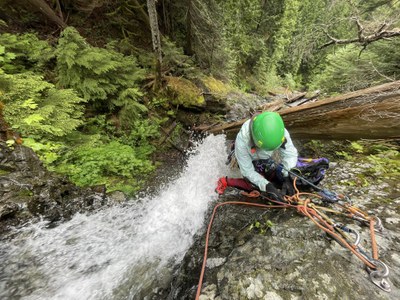
Trip Report
In-Canyon Rescue Practice
A fun day of practicing rescue and advanced rigging techniques in a canyon environment
- Sun, Jun 11, 2023
- Change Creek
- Canyoning
- Successful
-

- Road suitable for all vehicles
-
Change Creek was in great condition. The trail up needs a little bit of work and can be hard to find in places. In most of those places, you can look around and find flagging. All anchors were in good shape, and flow was moderate.
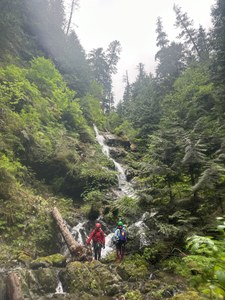
In-Canyon Rescue Practice is an opportunity for any Intermediate Canyoning graduate to put what 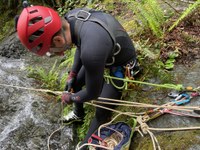
they learned into practice in a canyon environment. Rescue skills that are straight-forward at the program center can become very challenging in canyon terrain.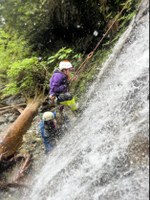
Anchor placement, positioning of the anchor manager, and the geometry of each rappel create unique challenges. What would normally require someone to rig a 2:1 mechanical advantage system might require a 3:1 or even a 4:1 if the subject is being hauled over high-friction, sloping terrain. An anchor manager at a hanging rebelay has limited room to work and body positioning can make it very challenging. Practice in a canyon environment helps you assess terrain from a rescue perspective while in a canyon.
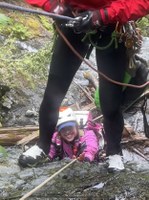 We had a great day with a great team! With 2 leaders and 5 participants, we started off the day converting fixed systems to a lower.
We had a great day with a great team! With 2 leaders and 5 participants, we started off the day converting fixed systems to a lower.
Once warmed up, we moved on to direct rescue scenarios. We set up a mock foot-entrapment and practiced direct rescue for that situation, and a mock hand entrapment (complete with a Halloween hand!). The practice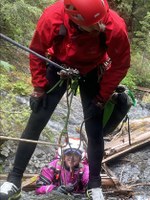 reinforced how challenging and risky a vertical direct rescue can be, and it also gave everyone a quick and effective tool for rescuing most hand entrapments.
reinforced how challenging and risky a vertical direct rescue can be, and it also gave everyone a quick and effective tool for rescuing most hand entrapments.
After some fun and learning with hand entrapments and more conversions from fixed systems to releasable, we wrapped up the day with twin systems, 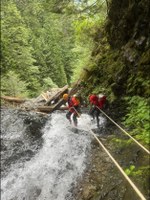 and moving an injured teammate through the canyon.Overall, it was a great day with a strong team. We planned ahead for a long day with a lot of
and moving an injured teammate through the canyon.Overall, it was a great day with a strong team. We planned ahead for a long day with a lot of
standing around - we brought lots of snacks and wore extra layers to stay warm. This gave everyone plenty of time to problem solve and work 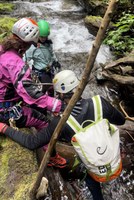 through the challenges that each scenario presented,
through the challenges that each scenario presented,
 Becca Polglase
Becca Polglase